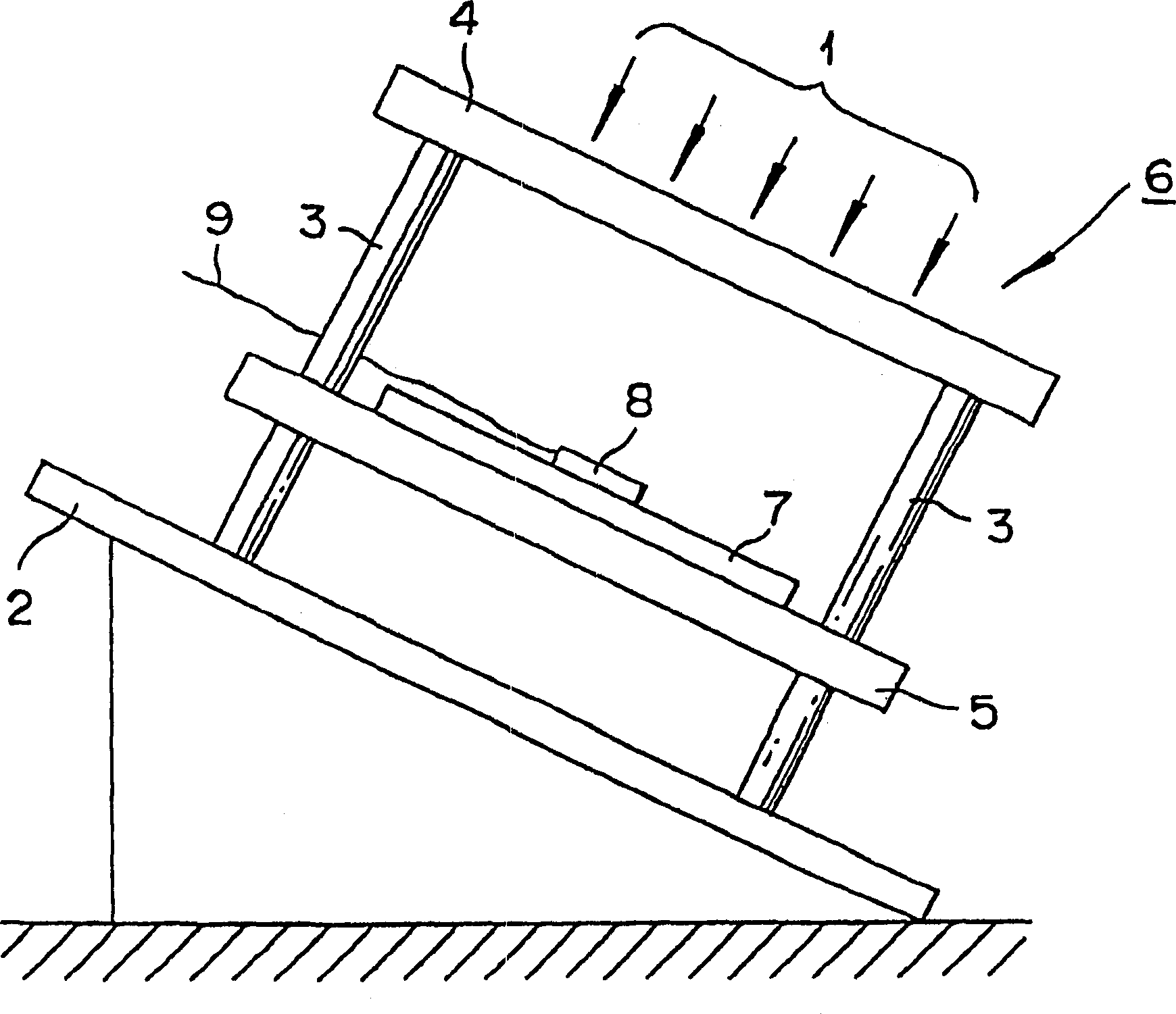Phthalocyanine compound, its producing process and hear-infrared absorption dye, and near-infrared absorption light filter using with the same dye
A compound and near-infrared technology, applied in chemical instruments and methods, organic dyes, azo dyes, etc., can solve problems such as emission of near-infrared radiation and electrical equipment failure, and achieve the effect of preventing eye fatigue
- Summary
- Abstract
- Description
- Claims
- Application Information
AI Technical Summary
Problems solved by technology
Method used
Image
Examples
Embodiment 1
[0193] (Example 1: VOPc(PhS) 8 {2,6-(CH 3 ) 2 PhO} 4 {(C 2 h 5 ) 2 NCH 2 CH 2 NH} 4 Synthesis)
[0194] In a 100ml four-necked flask, 10g (20.7mmol) of 3-(2,6-dimethylphenoxy)-4,5-bis(phenylthio)-6-fluorophthalonitrile, 0.978 g (6.22 mmol) of vanadium trichloride, 0.81 g of octanol and 14.19 g of benzonitrile. The contents of the flask were then stirred continuously at reflux for approximately four hours. Thereafter, the mixture in the flask was cooled to 60° C. together with 30 g of benzonitrile added thereto, and the resulting mixture was cooled to 60° C. together with 14.45 g (124 mmol) of N,N-diethylethylenediamine added thereto. Stirring was continued for about six hours. The stirred mixture was cooled, and the reaction solution in the flask was filtered. The filtrate was added dropwise to a mixed solution of acetonitrile and water to precipitate crystals, which were then washed with a mixed solution of acetonitrile and water. By vacuum drying, 7.79 g of VOPc(...
Embodiment 2
[0200] (Example 2: VOPc{2-(CH 2 O)PhS} 8 {2,6-(CH 3 ) 2 PhO} 4 {(C 2 h 5 ) 2 NCH 2 CH 2 NH} 4 Synthesis)
[0201] According to the steps of Example 1, while using 11.23g (20.7mmol) of 3-(2,6-dimethylphenoxy)-4,5-bis(2-methoxyphenylsulfanyl)-6-fluoro Phthalonitrile replaced 10 g of 3-(2,6-dimethylphenoxy)-4,5-bis(phenylthio)-6-fluorophthalonitrile to give 8.06 g (yield : 59.4mol%, based on 3-(2,6-dimethylphenoxy)-4,5-bis(2-methoxyphenylthio)-6-fluorophthalonitrile) VOPc{2 -(CH 2 OPhS) 8 {2,6-(CH 3 ) 2 PhO} 4 {(C 2 h 5 ) 2 NCH 2 CH 2 NH} 4 .
[0202] Elemental analysis
[0203] Using the same method as in Example 1, the maximum absorption wavelength, visible light transmittance and solubility of the obtained phthalocyanine compound were tested. The test results are shown in Table 23 below.
Embodiment 3
[0204] (Example 3: VOPc(PhS) 8 {2,6-(CH 3 ) 2 PhO} 4 [{(CH 3 ) 2 NCH 2 CH 2 NH}] 4 Synthesis)
[0205] According to the step of Example 1, while using 17.92g (124mmol) of N,N-diisopropylethylenediamine instead of 14.45g of diethylethylenediamine, 7.98g (yield: 61.8mol%, based on 3 -(2,6-Dimethylphenoxy)-4,5-bis(phenylthio)-6-fluorophthalonitrile) VOPc(PhS) 8 {2,6-(CH 3 ) 2 PhO} 4 [{(CH 3 ) 2 CH} 2 NCH 2 CH 2 NH] 4 .
[0206] Elemental analysis
[0207] Using the same method as in Example 1, the maximum absorption wavelength, visible light transmittance and solubility of the obtained phthalocyanine compound were tested. The test results are shown in Table 23 below.
PUM
| Property | Measurement | Unit |
|---|---|---|
| thickness | aaaaa | aaaaa |
| thickness | aaaaa | aaaaa |
| thickness | aaaaa | aaaaa |
Abstract
Description
Claims
Application Information
 Login to View More
Login to View More - R&D
- Intellectual Property
- Life Sciences
- Materials
- Tech Scout
- Unparalleled Data Quality
- Higher Quality Content
- 60% Fewer Hallucinations
Browse by: Latest US Patents, China's latest patents, Technical Efficacy Thesaurus, Application Domain, Technology Topic, Popular Technical Reports.
© 2025 PatSnap. All rights reserved.Legal|Privacy policy|Modern Slavery Act Transparency Statement|Sitemap|About US| Contact US: help@patsnap.com

